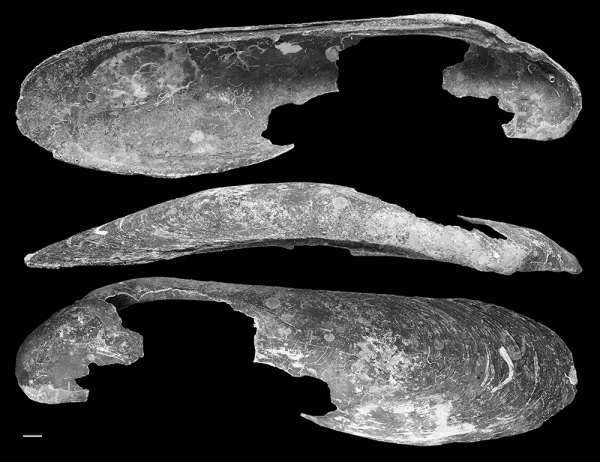A paper has just been published this month revealing the exciting discovery of an undescribed species of clam from the family Vesicomyidae.
The large (28 cm in length) long-dead clam shells are exciting because they are the first evidence for deep-sea hot venting or cold seepage in the Ross Sea. Vent and seep species have previously been recorded from the Antarctic but nothing has been reported to date from the NZ portion of the Antarctic in the Ross Sea (Marshall & Tracey, 2015).
The vesicomyid clam shells are pretty big at 28 cm and resemble existing species of cold-seep clams: Abyssogena Krylova, Sahling, and Janssen, 2010, and “Ectenagena” extenta (Krylova and Moskalev, 1996) found in the deep ocean trenches of the North Pacific at 3000-6329 m.
In New Zealand we have some cold-seep sites, and associated with these are some very distinctive species of bivalve. Our New Zealand-equivalent cold-seep clam, Calyptogena tuerkayi Krylova & Janssen, 2006, is a more modest 4 cm long.
Cold seeps occur at geologically active and passive continental plate margins and occur when methane enriched waters are forced up through the sediments and bubble out of the seabed. Dense communities of animals and free-living and symbiotic bacteria live at these seep sites making use of the increased food supply, availability of hard seafloor and high concentrations of methane and sulphide in the water column (Levin, 2005).
In Critter of the Week number 79 we introduced you to Gigantidas gladius, a bivalve that lives exclusively at hot vent sites in the volcanically active Kermadec region of New Zealand, which you can read more about on the link below:
Critter of the Week 79 - facebook post
The vesicomyid specimens from the Ross Sea were collected by a toothfish longline vessel and returned to NIWA by a Ministry for Primary Industries scientific observer.
Reference:
Marshall B. & Tracey D. (2015). First evidence for deep-sea hot venting or cold seepage in the Ross Sea (Bivalvia: Vesicomyidae). The Nautilus 129(3):140–141.

